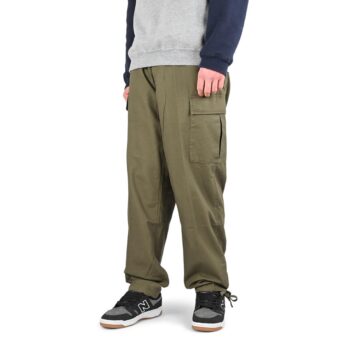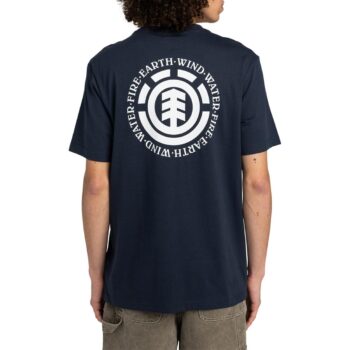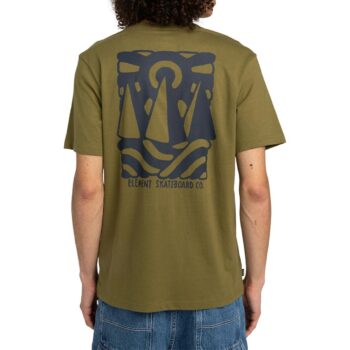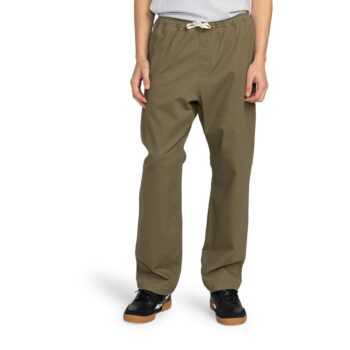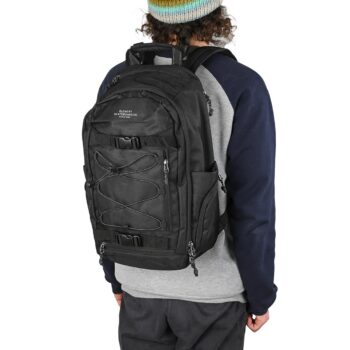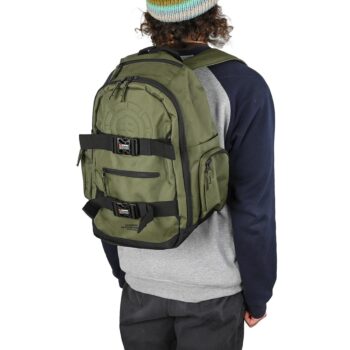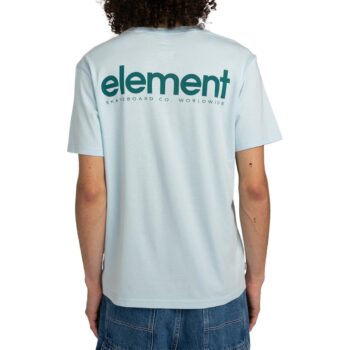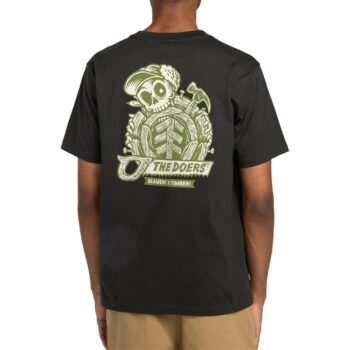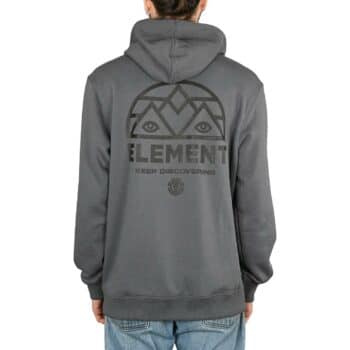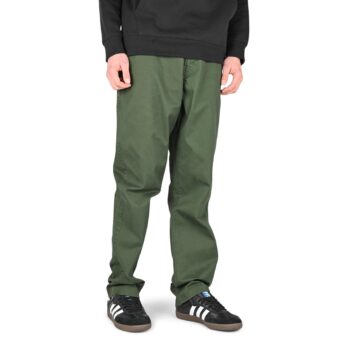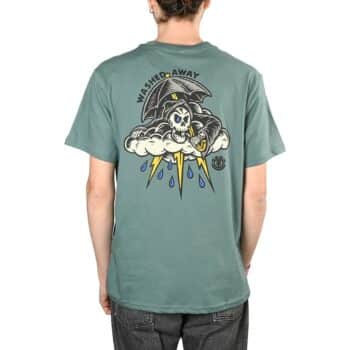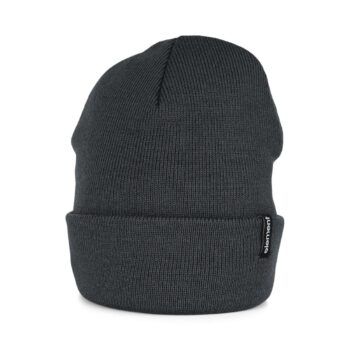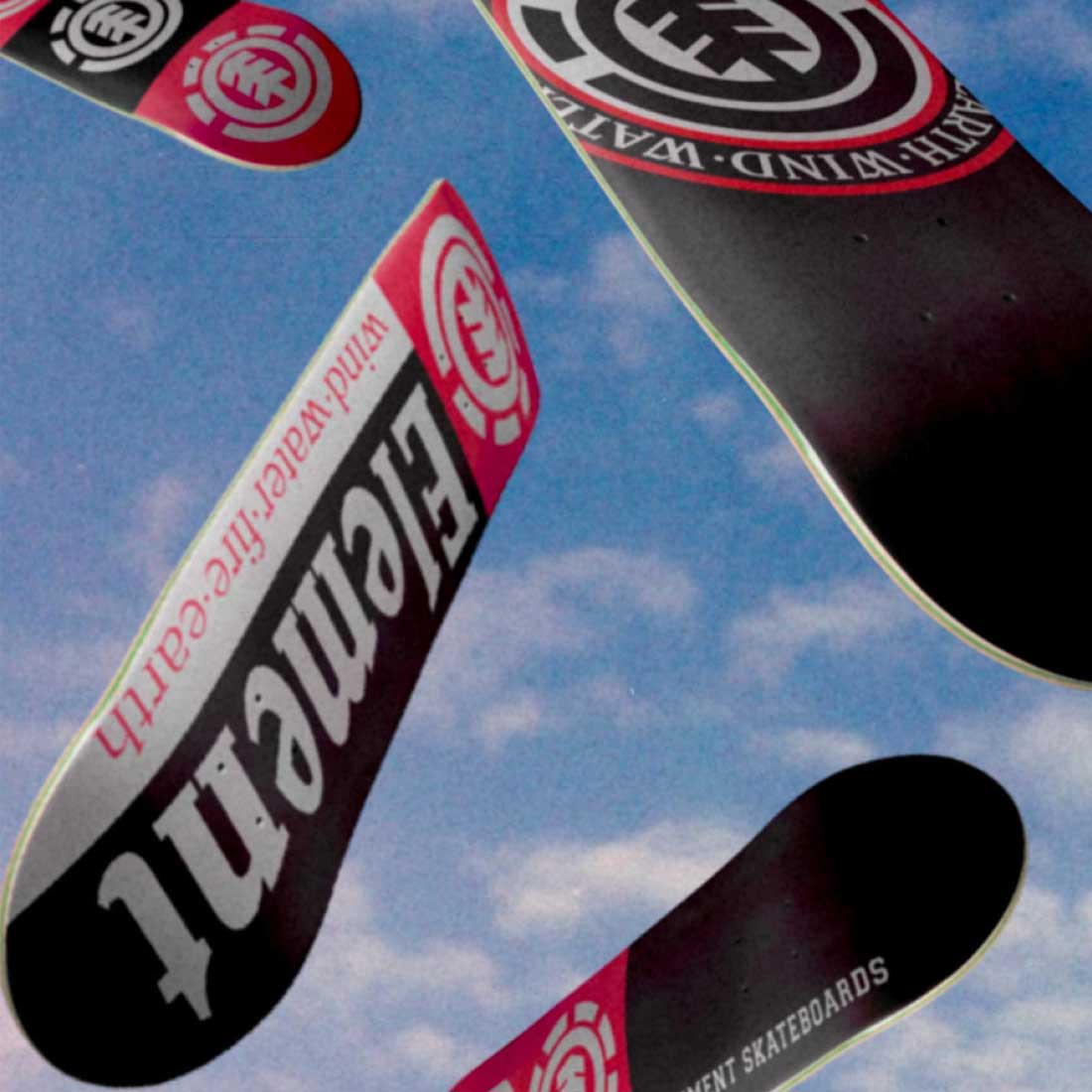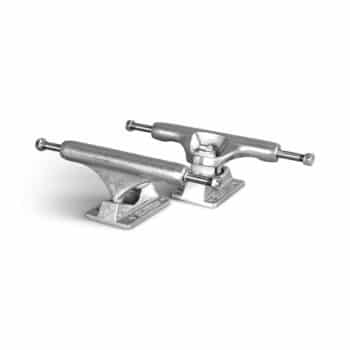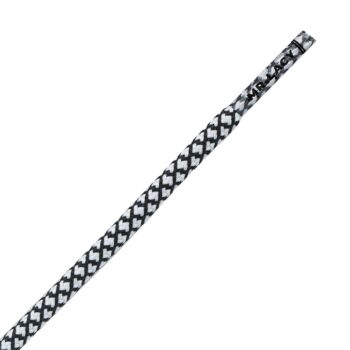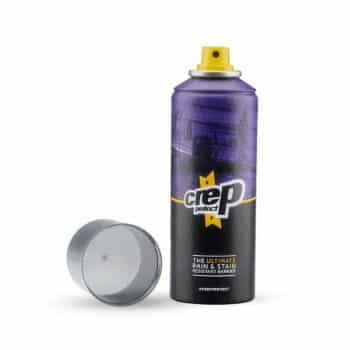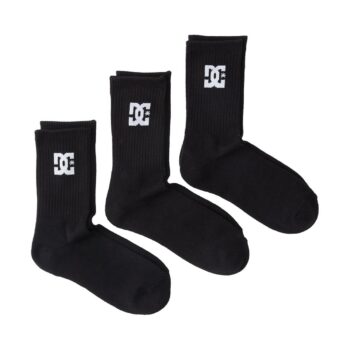Element, a true grassroots skateboard company
In the mid-'90s, Element underwent significant changes, including rebranding itself simply as "Element". The new name reflected the company’s goal of appealing to a broader skateboarding audience by providing products for skateboarders that resonated with their lifestyle and philosophy. In 1995, Element started to gain recognition for its high-quality hardware, particularly its decks. A defining feature of Element decks was their drive to create unique construction techniques, which emphasized durability, performance, and aesthetics. This positioned themselves early at the forefront of deck manufacturing, with constructions such as “Fiberlight” and “Helium” technology being released into the market over the next few decades. The company also began incorporating environmentally conscious materials, which helped them stand out in the skateboarding market.
Building an incredible skate team
Throughout the 2000s, Element quickly became one of the most influential skate brands. This was also when they built an iconic team of riders, which helped cement their place in the skateboarding world. Notable skaters who joined Element during this period included:
- Chad Muska – A legendary street skater and one of the most influential figures in skateboarding at the time.
- Bam Margera – A notorious figure in skateboarding and later popularized in the "Jackass" series, Bam played a key role in Element's culture and media exposure.
- Nyjah Huston – A young prodigy who was recruited into the team and became one of the most successful skateboarders of his generation.
Element's association with these riders allowed them to grow their influence globally, appearing in skate videos, contests, and media outlets.
Environmental consciousness
In the mid-2000s, Element became known for its efforts to merge skateboarding with environmental consciousness. The company started creating eco-friendly products, using sustainable wood and materials in its skateboard decks. It also promoted its "Elemental Awareness" initiative, a non-profit organization focused on environmental advocacy.
Element became involved in skateboarding’s growth in various international markets. Their focus on using skateboarding to communicate a message of positivity and sustainability helped them appeal to a broader demographic, particularly those who identified with the brand's progressive and eco-friendly values.
By the 2010s, Element had solidified its position as one of the top skateboarding brands. The company’s association with Nyjah Huston, one of history's most successful competitive skateboarders, further elevated Element’s reputation. Huston won numerous X Games gold medals and became a dominant force in street skateboarding, keeping Element at the forefront of competitive skating.
Bridging the gap with popular culture
During this time, Element expanded into the lifestyle clothing market, offering skate culture-focused apparel, further reinforcing its identity. Element's logo, featuring a stylized tree, became synonymous with skateboarding culture and environmentalism.
Throughout the 2010s, Element collaborated with artists, musicians, and other brands to create limited-edition products, aligning with the broader streetwear and action sports world. Some of the brand’s notable collaborations included partnerships with Public Enemy, Bad Brains and Polo Ralph Lauren. These collaborations helped expand Element's influence beyond skateboarding into fashion, music, and pop culture.
Today, Element Skateboards is considered one of the world's most established and culturally relevant skateboarding brands. The company continues to innovate in both product design and environmental efforts. Element actively supports grassroots skateboarding through sponsorships, events, and its ongoing commitment to environmental advocacy. The brand’s history reflects skateboarding culture, eco-consciousness, and dedication to creative expression, making Element a staple in the skateboarding community.
